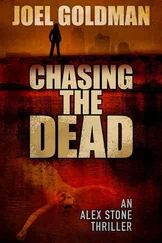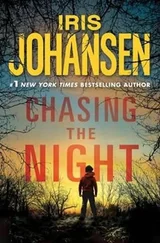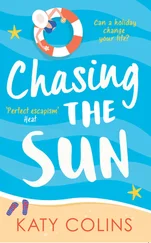I applied for assistant positions at Cosmo , the Economist , the Nation , Redbook , InStyle , House Beautiful , and Martha Stewart Living . I interviewed to be Lloyd Grove’s research assistant for his gossip column at the Daily News . (I heard he preferred young female assistants.) But he took one look at me and could tell I didn’t know East Hampton from East Rutherford.
I waited and waited, clutching a faux-leather padfolio filled with clips from the Daily Texan , in the lobby of the old Times building. A political reporter whom my sister met through a mutual friend said she’d meet with me, but she never showed. After an hour, a security guard told me I had to leave.
I scrapped around for freelance writing jobs. I reviewed Greek restaurants in Queens and wrote a story for Time Out about things you can buy for a dollar in New York. I worked part-time out of some rich lady’s Upper East Side basement fact-checking a guidebook to interior decorators that she published for her friends. I applied to the Columbia University Graduate School of Journalism even though it would’ve taken me the rest of my adult life to pay for a single semester. I was wait-listed. I became an early adopter of Internet trolling, blasting the whores in corporate media in manifestos that my new boyfriend (the homeless Italian with the camcorder) published on his blog. If ya can’t join ’em, troll ’em. I considered starting a dog-walking business. You know it’s bad when scooping poop off sidewalks sounds promising.
Finally, in the dead of February when I was almost broke, I went to the Strand bookstore and bought a lightly used copy of LSAT for Dummies . That same night, over a dinner of yogurt and instant ramen, I got a call from John Bussey, the foreign editor at the Wall Street Journal .
What is this gypsy passion for separation, this readiness to rush off—when we’ve just met?
—MARINA TSVETAEVA
NEW YORK CITY → TOKYO → DES MOINES, 2004–2007
The legend went that on September 11, 2001, after the second plane hit the World Trade Center, across the street the Journal ’s newsroom filled with smoke and debris. Security forced everyone to evacuate, concerned that if the Twin Towers collapsed westerly, they would take the Journal with them. John Bussey refused. As reporters and editors fled to safety, Bussey crawled under a desk to report, waded into the street to talk to people, and wrote a story.
I reread his lead every September 11. “If there’s only one sight I’ll remember from the destruction of the World Trade Center, it is the flight of desperation—a headlong leap from the topmost floors by those who chose a different death than choking smoke and flame.”
Four months later, Bussey flew to Karachi where he met Danny Pearl’s pregnant wife, Mariane, and tried to negotiate the release of Pearl, the Journal ’s thirty-eight-year-old South Asia bureau chief who’d been kidnapped days earlier. Instead, Bussey ended up having to watch the video of Danny’s captors beheading him.
Bussey was based in Hong Kong when he called to interview me to be the Journal ’s foreign news assistant, based in New York. I don’t remember exactly what he said on that first call, but he was manic and fast-talking and unimpressed with my unimpressive résumé. My name had only gotten to Bussey because of Blythe. I was a rover filling in as the assistant to Tom Wallace, the editor in chief at Condé Nast Traveler , until he found a permanent assistant. I’d, of course, applied for the job, but a senior editor who looked at my credentials shook her head and said, “Yeah, Tom really wants someone who went to Harvard.”
I took one look at Blythe’s résumé—Exeter, Harvard, classical pianist—and decided I hated her. She got the job. Six months later, we skipped out on some PR luncheon our bosses made us cover to go shopping at Loehmann’s. Blythe taught me how to pull an Hermès scarf out of a tangle of marked-down DKNY and has been a dear friend ever since. A few months later, she left Traveler to be the Journal ’s foreign news assistant and in typical Blythe fashion would, a year later, get promoted and move to Hong Kong. She put me up to replace her.
I didn’t tell Bussey that I needed this job to save me from a pooper-scooper or worse, law school. I told him I spoke fluent Spanish and had lived in Mexico and had spent a year studying Chilean poetry in Santiago. I talked about how I’d written for the Daily Texan and gotten a grant to report from Chiapas on the Zapatista uprising. We got into a heated debate about NAFTA and Pinochet. He’d read my clips, even the blurbs I’d written for Time Out . This led to an in-depth discussion about where to find the best saganaki in Astoria. I’d left out the part about a prominent literary agent firing me after four months. I remember Bussey being intrigued by my impoverished New York conditions. He asked if I had a TV or AC unit. (I had neither.)
Three weeks and a couple interviews later, Bussey’s deputy in New York, Lora Western, called to offer me the position.
The second I stepped into the Journal newsroom, nearly three years after I’d moved to New York, I felt I’d finally found my people. It was grimy, with low-hung ceilings and reams of printer paper piled up indiscriminately around an open floor plan and pea-green carpet. I arrived at the office every morning before eight. The women wore orthopedic sneakers with skirt suits, and the men all had sweat circles under their pocketed dress shirts. My banana clip fit in just fine there.
Bussey being based in Hong Kong meant I had to be prepared for middle-of-the-night requests to overnight a stash of surgical masks when the stores ran out during the SARS epidemic or to get bulletproof vests to reporters in Beirut or to find Bussey (a notorious cheapskate) a room in Davos for under a hundred dollars that wasn’t a youth hostel.
I once had to take dictation from the Latin America correspondent José de Córdoba as he hid in a bathroom in Haiti during the 2004 coup that ousted Jean-Bertrand Aristide. I had to get our Middle East correspondents enough cash to buy an armored BMW in Baghdad. To do this, the Journal wired $40,000 into my personal checking account, which had about $400 in it at the time. I went to Chase to withdraw the cash. I still don’t know if the bank representative was kidding when he asked if I wanted the money in a briefcase handcuffed to my wrist. I then went across the street to the Western Union and after some odd looks and a lot of paperwork that somehow got me around federal rules for international money transfers, managed to wire the cash to Iraq. I’m certain this errand landed me on a terrorist watch list.
But mostly Bussey and Marcus Brauchli, then the national news editor, and the other senior Journal editors encouraged me to blow off my assistant duties. “You want to be a writer, you have to write,” Bussey said.
Marcus once saw me struggling over a pile of newsroom expenses to process and staged an intervention. He picked up a handful of receipts from various countries. The currency conversions alone were making my head spin. By then I’d written several features, including one about people who impersonate Navy SEALs, and helped with 2004 campaign coverage. But I hadn’t yet cracked the front page. “You are not allowed to file a single expense report until I see your byline on page one,” Marcus said. “That’s an order.”
He approved a six-night reporting trip to Iceland so I could write a feature story that ran on the cover of the Media & Marketing section. I wrote half a dozen A-heds—the Journal ’s term for the quirky middle column that runs daily on the front page. One was about women undergoing surgery to reconstruct their hymens so they appear to be virgins again, a story I’d come across while browsing the ads in the back of Hoy , the Spanish-language newspaper. I took the F train to Queens to meet Esmeralda Vanegas at Hymen RidgeWood Surgery. “It’s the ultimate gift for the man who has everything,” one of her patients told me. (An editor proposed the headline ONE NIGHT STRAND; we went with VIRGIN TERRITORY.) And I wrote a couple leders— Journal parlance for the serious economic or business story that runs in two columns on the front page.
Читать дальше












